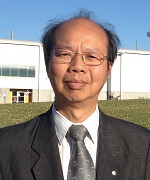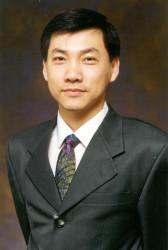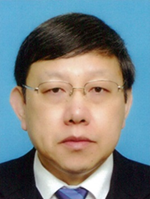Keynote Speakers
 |
Prof. John MoRoyal Melbourne Institute of Technology, Australia |
Abstract: Compared to CNC machine tools, multi-axes Industrial Robots (IRs) suffer from significant vibration and instability if they are required to do machining of metals, due to high forces during cutting and their relatively weak structure. Research has shown that while CNC machines often have stiffness greater than 50 N/��m, IRs usually have less than 1 N/��m. Furthermore, even IRs with a large mass have a natural frequency of around 10Hz and cannot be compared with hundreds to thousands of hertz of CNC machines. On the other hand, due to the IRs�� high degrees of freedom, they can perform machining trajectories in ample 3-dimensional space while keeping an arbitrary position and orientation for any cutting tool. However, the lack of stiffness of IRs have been severely limiting the use of IRs as machining tools for objects with complex shapes.
While conventional CNC machine tools dominate in cutting processes, they do have limitations, especially with hard-to-cut materials such as polycrystalline diamond or boron nitride. Unfortunately, the aerospace and automotive industries are fast adopting high strength to weight ratio materials which are typical much more difficult to be cut or shaped. A new electric discharge machining method has been developed on a conventional tool and cutter grinder machine. The success of machining the hardest materials on earth has revealed several advantages of the new manufacturing process, one of which is the non-touching machining operation. This new finding sparks a new line of research into integrating electric discharge machining process with IRs spatial flexibility while the system does not create any contacting forces that the IRs are most disadvantaged.
 |
Prof. Yu-Lung LoNational Cheng Kung University (NCKU), Taiwan |
Abstract: Optimizing Selective Laser Melting (SLM) parameters is crucial for enhancing the efficiency and precision of additive manufacturing for green design. This study focuses on refining process parameters for Ti6Al4V and IN718 using a dimensionless model, melting pool geometry model, energy-saving index, and maximum hatching space. The proposed optimization strategy effectively reduces energy consumption while increasing throughput, ensuring superior mechanical properties of the fabricated components.
Furthermore, processing maps for IN713LC and AA6061 were developed to characterize crack-free conditions in 3D printing. By defining optimal process windows based on specific criteria, these maps contribute to improving material performance and structural integrity. The integration of these findings enhances manufacturing reliability, making SLM more viable for industrial applications. This study provides valuable insights into energy-efficient and high-precision metal additive manufacturing.
 |
Prof. C W LIMCity University of Hong Kong, China |
Abstract: Elastic wave manipulation by topological metamaterial has always been a hot research topic due to its great application potential. However, the rich polarization makes elastic wave more complicated than other waves and restricts the development of topological elastic metamaterial within mono-polarized waves. This paper introduces a frame structure in hexagonal lattice which can separately control the in-plane and out-of-plane polarized bandgap by utilizing the accidental Dirac cone. Further investigations reveals that the in-plane and out-of-plane accidental Dirac cone divide the parametric space into four regions, where each region has distinct valley Chern numbers. The combination of unitcells from different regions enable polarization-dependent topological protected interface modes, where some cases only support in-plane or out-of-plane mode while some cases support both. By employing such a peculiar property, this paper demonstrates polarization-dependent waveguiding and wave separation. One of the designed modes is manufactured by 3D printing and experiment validation of wave separation is conducted. Further study shows that the in-plane and out-of-plane waveguiding is independent of each other even if there are intersections on the waveguiding paths. Therefore, some interesting elastic devices which can carry and encrypt messages can be designed, and several examples are demonstrated. The presented work in this paper helps expand applications of topological elastic metamaterial from dealing with mono-polarized waves to both in-plane and out-of-plane polarized wave, which holds great potential in exploring more advanced elastic devices.
ICMAA Previous Distinguished Speakers
 |
Prof. Mingcong DengTokyo University of Agriculture and Technology, Japan�� �� |
 |
Prof. Cheng LiThe Hong Kong Polytechnic University, Hong Kong�� �� |
 |
Assoc. Prof. Kheng Lim GohNewcastle University in Singapore, Singapore�� �� |
 |
Prof. Osman AdiguzelgFirat University, Turkey�� �� |
 |
Prof. Yaser Abdulaziz HadiYanbu Industrial College, Saudi Arabia�� �� |
 |
Prof. Tsair-Wang CHUNGChung Yuan Christian University, Taiwan�� �� |
 ICMAA 2026
ICMAA 2026